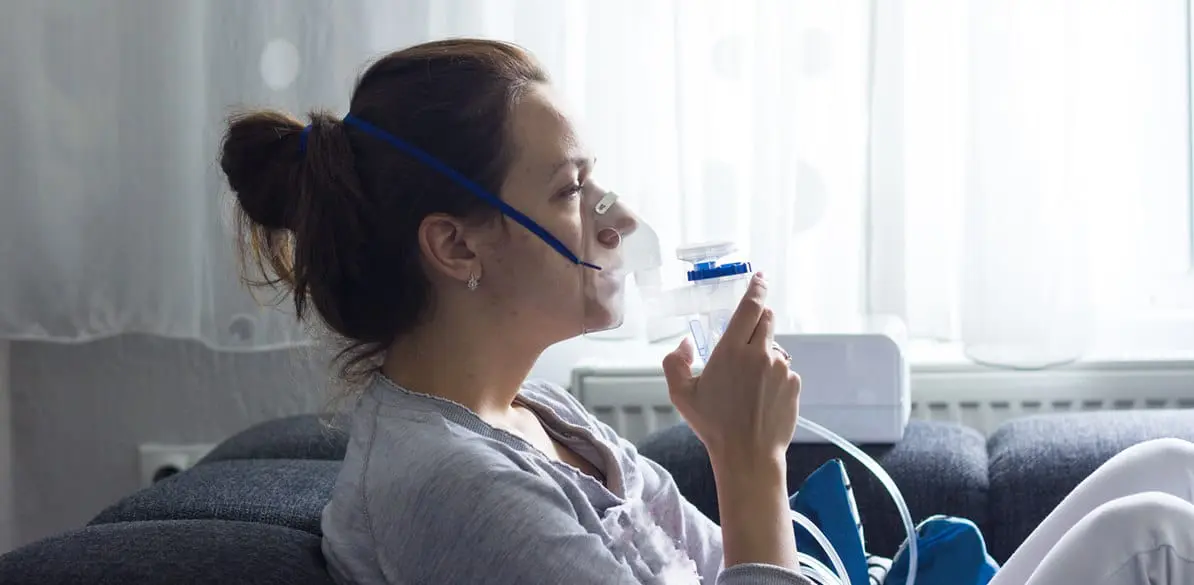Lower airway infection, atelectasis, hemoptysis, and influence on driving

Pneumonia
Pneumonia is the infection of the pulmonary parenchyma, and is associated more severely in smokers and immunosuppressed patients
The most common clinical manifestations are cough, with or without expectoration and fever. It can be associated with pain of pleuritic type, dyspnea, shivering, myalgia, headache, and diarrhea.
The treatment is based on antibiotics, hydration, and control of the possible complications.
Advice on Pneumonia
- During the pulmonary condition, the patient cannot drive.
- The absence of symptoms resulting of complete resolution of the episode will allow for driving again, provided the physician considers it appropriate, and thus he indicates it.
The pulmonary abscess
The pulmonary abscess is characterized by a localized purulent cavity with adjacent pneumonitis, and usually shows an insidious onset.
The patient suffers dry or productive cough with a large amount of purulent sputum as well as fever, night sweating and weight loss. He can also suffer chest pain of pleuritic type.
Other cases do not evidence symptoms until the bronchial perforation with expectoration occurs.
The treatment with antibiotics will be continued until the pneumonitis has subsided completely and the cavity has disappeared, a situation that can last months.
Advice on Pulmonary abscess
- With a lung abscess, the patient cannot drive.
- The favorable outcome of the clinical condition without symptoms and with recovery of the general state will allow for driving, provided the physician reports favorably for it.
- The patient should be warned that resolution of the condition may be slow, and to be patient in indications for driving, established for his safety.
Bronchiectases
Bronchiectases are irreversible bronchial expansions evidenced as chronic purulent bronchorrhea, or relapsing hemoptysis for years, or more frequently, cough and chronic expectoration.
Its etiology is multiple for local causes such as bronchial obstruction, tuberculosis, severe pneumonia, necrotizing infections, and postoperative or general atelectasis including alpha-1-antitrypsin deficit, mucoviscidosis, Sjögren’s syndrome, immunodeficiencies, etc.
The treatment is aimed at controlling the acute and chronic infection, secretions, airway obstruction and complications such as hemoptysis, hypoxemia, respiratory failure and cor pulmonale.
Surgery should be considered when the response to conservative treatment is poor for recurrent pneumonia, severe bronchial infections, and frequent hemoptysis.
Advice on Bronchiectases
- The patients should avoid smoking and other irritants, as well as sedatives or antitussives, that in addition interfere with driving.
- Complications from respiratory infection prevents from driving until the condition subsides completely.
- As these patients permanently expectorate, they can easily distract while driving for taking handkerchiefs or papers to place sputum in them, with the risk of accident.
- During the process of expectoration, they use one or both hands, reducing or losing the control in driving.
- They should be recommended to carry out short travels and doing all stops in a safe place, to be able to expectorate without running risks.
- Hemoptysis prevents from driving until the physician verifies the origin, severity and possibility for relapsing.
- Advanced pulmonary and cardiac complications of the disease are disabling for driving, often definitively. The report of the physician will advice in this regard for safety.
Atelectasis
Atelectasis can be acute or chronic, complete or partial.
The leading cause is the bronchial obstruction by mucus plugs, tumors, granulomas, or foreign bodies, and also, by external compression of a bronchus by adenopathies, tumors, aneurism, etc.
The fast occlusion with massive collapse causes pain in the affected side, dyspnea, and cyanosis of sudden onset, hypotension, fever, and tachycardia, and at times shock. The treatment is urgent, approaching the cause of origin.
Atelectasis of slow onset may not show symptoms, or these be mild.
Chronic atelectasis frequently becomes infected and requires antibiotic therapy.
The longer the lung remains without expanding, the more probable it is that the origin is destructive, fibrotic and bronchiectatic injuries.
In the cases of recurrent respiratory infection or hemoptysis of the affected area, surgical resection should be considered.
Advice on Atelectasis
- Symptomatic atelectasis does not allow for driving until the clinical condition subsides completely and the treatment of its cause.
- As the conditions are highly varied, the report of the physician according to the individual evolution will counsel on the indication to drive in each case.
Hemoptysis
Hemoptysis usually results of bronchial circulation.
The most common causes are acute and chronic bronchitis, bronchogenic carcinoma, tuberculosis, pneumonia, and, to a lesser extent, bronchiectases.
In the event of hemoptysis it is important to quantify it, establish the cause, find the bleeding, and treat it. Massive hemoptysis is a medical-surgical emergency that occurs in less than 5% of the patients.
Hemoptysis is an alarming symptom for the patient, but it is usually limited and stops spontaneously without specific treatment, lying down on the bleeding side.
Cough is frequently a triggering factor and should be treated with codeine.
Advice on Hemoptysis
- Hemoptysis prevents from driving until the physician verifies its origin, severity, and possibility of recurrence.
- The physician will advise against driving to any patient at risk of hemoptysis.
- The patient can drive, if his physician considers it advisable given the favorable progression of the clinical condition, and reports it in this regard.
